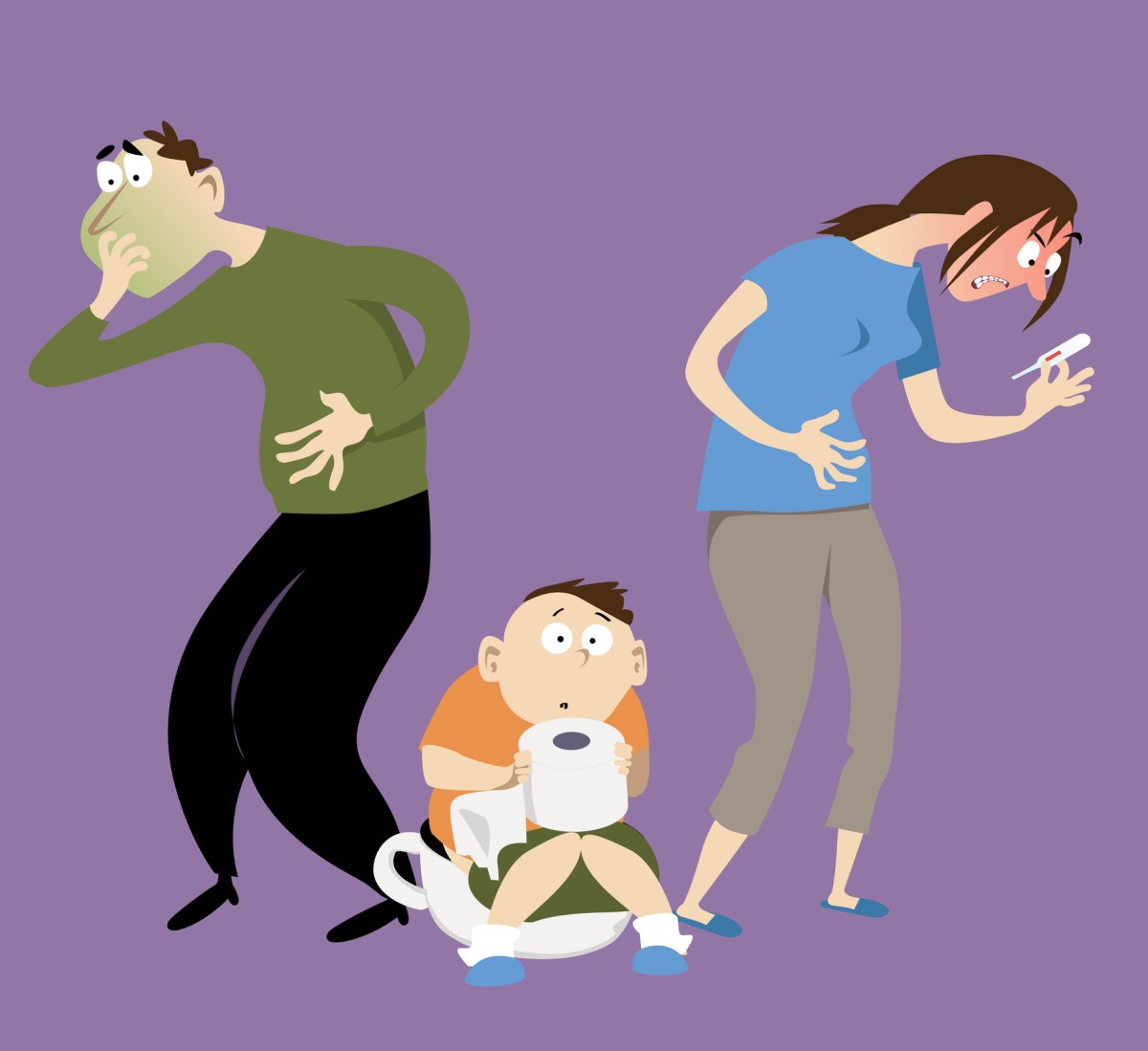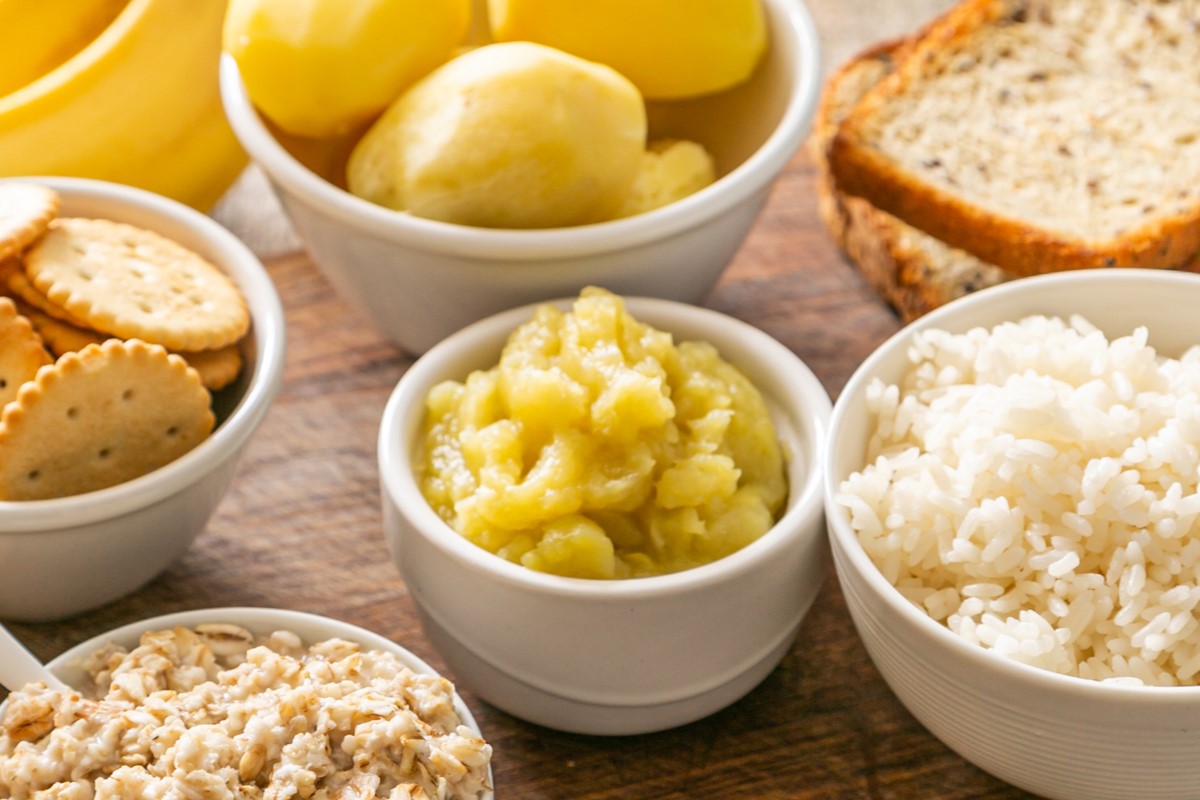- Clinical Propedeutics in Emergency Medicine: Dobiáš Viliam
- meditrend.sk - Diarrhoea and its treatment: doc. PharmDr. Daniela Mináriková, PhD.
- mayoclinic.org - Diarrhea
- clevelandclinic.org - Diarrhea
- webmd.com - Diarrhea
- healthline.com - What are the treatment option for diarrhea?
Diarrhoea: What causes loose stools and what are the symptoms?

Diarrhea is considered to be a thin stool that does not keep its shape and appears multiple times during 24 hours. It is a common symptom of diseases and diseases of the digestive system.
Diarrhoea is not always a serious problem. It can be triggered by eating a diet higher in fibre and fluids, or it can occur in stressful situations.
In most cases, this type of diarrhoea does not last more than a day. It also includes less serious conditions, such as irritable bowel or irritable colon, where it is not an organic but a functional disorder.
Pseudorrhoea is a loose stool that comes out after a small amount of hard stool. The hard stool liquefies in the colon and hard stool with loose stool is expelled. It occurs in colon cancer.
When you have diarrhea, it is not pleasant. You are afraid to leave the house, you are always on alert because in most cases the feeling of urge to stool comes suddenly. Usually diarrhea lasts 2-3 days.
With diarrhea, there is an increased excretion of water and electrolytes from the body or it is a disorder of fluid absorption in the intestine.
Usually diarrhea persists for several days.
A serious health problem occurs if diarrhoea involves a large loss of fluid, including vomiting and heavy sweating. This can lead to dehydration and loss of electrolytes.
Young children and people with cardiovascular disease are a high-risk group for whom diarrhoea is very dangerous.
Diarrhoea can cause dehydration.
Dehydration occurs when the loss of water and electrolytes is greater than their intake. In this case, there is a lack of fluid in the body.
Symptoms of dehydration
What are the symptoms of insufficient fluid in the body?
Symptoms of dehydration
Initial stage of dehydration:
- Feeling of dry mouth
- Fatigue
- Headache
Advanced stage of dehydration:
- Thirst
- Restlessness
- Irritability
- Reduced skin turgor (reduced skin elasticity)
- Sunken eyes
- Weakness, dizziness
- Fatigue
Severe degree of dehydration:
- Decreased urination, even complete cessation of urination
- Color of urine is dark yellow or brown
- Hypovolaemia - a decrease in the volume of circulating blood in the body
- Loss of consciousness
- Weak palpable pulse
- Low blood pressure
- Bluish discoloration of the skin on the fingers
Dehydration in young children is a serious problem.
Also read our magazine article:
Why is dehydration in children dangerous? What are the symptoms?
What to look out for and what to look out for in young children suffering from diarrhoea?
How does reduced fluid intake in children manifest itself?
- Dry diaper for more than 3 hours
- Dry tongue and dry mouth
- Fever
- Crying with no or few tears
- Sleepiness, irritability, unresponsiveness
- Sunken appearance of eyes, cheeks, abdomen
- In children under 1 year of age, a large fontanelle on the head is sunken (the skin on the top of the head in the hairline, where the skull is not yet healed, is sunken and a dent is formed there)
Typical symptoms for diarrhea are
- Frequent defecation
- Urgency to pass stool
- Stool consistency is thin, without form
Symptoms of diarrhea
- Thin, watery stools more than 3-5 times a day
- Nausea
- Vomiting
- Abdominal pain and cramps, especially in the lower abdomen
- Increased temperature
- Bloating
- Sudden urge to pass stool
- Pain and burning around the rectum
Symptoms of severe diarrhoea
- Admixture of mucus and blood in stool
- Fever
- Weight loss
Read also:
Summer diarrhoea: What causes it and how does it manifest itself? How to manage it?
Types of diarrhea
Diarrhoea is divided into types according to its cause, symptoms and course:
Secretory
This type of diarrhea contains 90% water in the stool.
Caused by diffuse diseases of the intestine, e.g. infectious diseases such as cholera, E. coli, viruses, from drugs after taking laxatives. Other causes are inflammatory bowel diseases or excessive secretion of certain hormones.
Symptoms:
- Watery stools of more than 1 litre per day, which do not improve even with fasting
- Abdominal pain
Osmotic (resorptive) diarrhea
Occurs with inadequate absorption of water-retaining substances. It is typical in lactose intolerance, celiac disease, diabetes, use of laxatives, small bowel disease.
Symptoms:
- Diarrhoea tends to be less than 1 litre per day and improves with fasting
- Abdominal pain and cramps
Motor (motility) diarrhoea
It arises from a violation of bowel motility and disorder of the anal sphincter; fasting does not improve it.
Motor diarrhea occurs in diabetes, decreased thyroid function and other diseases.
Stool is less than 1 liter per day, and bowel motility may be decreased or increased.
Increased bowel motility, for example in irritable bowel syndrome, leads to premature emptying of the colon.
If the motility in the small intestine is reduced, the bacterial flora in the intestine multiplies. The absorption of sugars, fats and bile salts is impaired. The result is diarrhoea.
A disorder of the anus can lead to spontaneous leakage of stool.
Exudative inflammatory diarrhoea
Arises from damage to the mucosa of the intestine by inflammation, erosions (loss of cells on the surface of the mucosa), ulcerations (formation of ulcers).
Typical of inflammatory bowel diseases such as Crohn's disease, ulcerative colitis, salmonellosis, shigella, clostridial infections, diverticulitis.
Symptoms:
- Increased production of mucus, protein, blood
- Stool is less than 1 litre
- Diarrhoea does not improve even with fasting
Diarrhoea does not improve with fasting.
Acute diarrhea
Acute diarrhea is sudden onset with a short duration. It is most often caused by bacteria, viruses, mycotic diseases, parasites, poisoning, medications such as antibiotics and laxatives, anxiety, allergies, diverticulosis, large fluid ingestion, including alcohol.
Chronic diarrhoea
Chronic diarrhoea lasts more than 4 weeks.
It is caused by intestinal inflammations such as Crohn's disease, ulcerative colitis, tuberculosis, clostridia, drugs such as antibiotics, non-steroidal antiphlogistic drugs, laxatives, food absorption disorder (celiac disease), pancreatic diseases, diseases of endocrine origin such as increased thyroid function, irritable bowel syndrome, long-course intestinal infection, radiotherapy, chemotherapy, conditions after stomach and bowel surgery.
What can trigger diarrhea?
Diarrhoea can occur when an infectious disease prevails in the intestines.
It can be triggered by:
- Bacteria (salmonella, E. coli, shigella, clostridium)
- Viruses (rotavirus, norovirus, adenovirus)
- Parasites (roundworms, tapeworms)
- Bacterial toxins (staphylococcal enterotoxin, clostridium)
- Medications (antibiotics that can disrupt the intestinal flora, chemotherapy, radiotherapy, laxatives, non-steroidal anti-inflammatory drugs)
- Food intolerances (lactose intolerance, celiac disease, histamine intolerance)
- Dietary habits (food combinations, speed of eating, stress, amount of food consumed, use of artificial sweeteners, fructose)
- Poisoning (food, drug, alcohol, mushroom, dirty hands disease)
- Hormonal changes in pregnancy, in women during menstruation
- Inflammation in the digestive tract of non-infectious origin (Crohn's disease, ulcerative colitis)
Symptoms of diarrhoea according to the causative agent
Diarrhoea and its course are manifested by various symptoms typical of its cause.
Bacterial diarrhea
- Typical of bacterial diarrhoea is its sudden onset
- Elevated temperature to fever
- Vomiting
- Abdominal pain
- Gagging in the abdomen
Stools:
- may be mushy at first, later watery
- there may be an admixture of blood and mucus
Diarrhoea caused by salmonellosis is often present.
The most common bacterial diarrheas and their symptoms (table)
| Incubation period | Duration | Stool - diarrhoea | Stool colour | Vomiting | Cramps, abdominal pain | Fever | |
| Salmonellosis | 8-26 hours | 2-7 days | Watery diarrhea | greenish colour | yes | yes | yes |
| Cholera | 1-5 days | 3-7 days | severe watery diarrhoea | light colour, similar to rice decoction | Yes | yes | No rather a drop in temperature |
| Shigella | 1-7 days | 2-3 days | watery stools | watery, later with admixture of blood, mucus | rarely yes | yes | yes |
| Campylobacter | 1 day to 1 week | 1-7 days | watery diarrhoea | with admixture of blood | rarely yes | yes | yes |
| E. coli | 3-8 days | 1-3 days | gradual change from normal stools to watery diarrhoea | in severe cases bloody diarrhoea | sometimes yes | yes | yes, mild |
Salmonellosis
The most common occurrence of salmonellosis is in summer.
The source of the infection is undercooked food, mainly of animal origin, after consumption.
The first signs of infection appear after 8-36 hours.
In the beginning, high fever, abdominal cramps, greenish watery diarrhea with painful urge to pass stool, blood in stool, fatigue, headache, nausea, frequent vomiting, alternating fever and chills appear.
Read more about salmonellosis:
What is salmonellosis?
Cholera
Cholera occurs in subtropical and tropical zones. The source of infection is a person affected by cholera who excretes stool.
The incubation period is 1-5 days with a duration of 3-7 days.
Frequent symptoms are violent diarrhea of brown, more often light color or watery cloudy milky color with mucus.
Stool output is several litres per day, diarrhoea is without urge to pass stool, with nausea, vomiting, drop in body temperature.
The tongue is covered with a coating and the mucous membrane of the oral cavity and nose is dry. The affected individual feels very thirsty, has muscle cramps, is tired and sleepy.
Bacterial dysentery - shigella
shigella is a bacterial infection and a highly contagious diarrheal disease.
The incubation period from infection is 1-7 days (most commonly days 2-3).
The source of infection is a sick person and transmission by contaminated food, water, or flies.
Symptoms begin with a sudden rise in temperature, abdominal cramps, painful urge to pass stools, diarrhea.
Watery stools are initially bulky and later change to frequent diarrhoea of small content, diarrhoeic stools with admixture of mucus, blood, accompanied by vomiting.
Campylobacter
Campylobacter infection is an infectious disease of animals transmissible to humans.
The incubation period is 1 day to 1 week and its most common occurrence is in summer. The duration of the disease is approximately 1-7 days.
Symptoms are fever, headache, muscle aches, fatigue, watery diarrhoea which is profuse, flatulence, vomiting, abdominal cramps. Sometimes blood in the stool appears. Inflammation of the intestine with its conspicuous enlargement, which sometimes resembles appendicitis, is associated.
E. coli (Escherichia coli)
The incidence is mainly in children, especially in the summer months.
A person can become infected after eating meat, raw unpasteurised milk, contaminated vegetables, fruit. However, transmission from an infected person is also possible.
The incubation period from infection is 3-8 days.
Symptoms vary from mild diarrhea to bloody stools with mucus, watery diarrhea is odorless, fever, abdominal pain, vomiting, fatigue.
Viral diarrhea
Viral diarrhea occurs in every age group, but especially in children.

They are caused by viruses, especially rotaviruses.
Enteric influenza - the causative viruses are noroviruses, adenoviruses, astroviruses, sapoviruses, coronaviruses, including COVID-19.
Incubation period from 24 hours to several weeks after infection.
A person can become infected by eating contaminated food, but also by contact with contaminated objects.
Symptoms of viral diarrhea:
- Watery stools
- indigestion
- abdominal cramps
- nausea and vomiting
- Increased temperature
Norovirus
The incubation period is 12-48 hours with a duration of illness of 12-72 hours.
A person can become infected throughout the year by transmitting the infection through contaminated hands, introducing the infection into the mouth, contaminated salads, eating fast food if the food was handled by a contaminated person.
Symptoms are nausea, vomiting, watery diarrhoea, abdominal pain, sometimes increase in temperature, pain in limbs, muscles, head.
Rotavirus enteritis
Rotavirus enteritis often occurs in children from six months to 5 years.
The common symptoms in children are thick and foul-smelling stools that are watery, green, sometimes with mucus and blood. The child has a distended abdomen, feels nauseous, vomits, has an elevated temperature, abdominal cramps and is tired.
The incubation period is 1-3 days. The whole course of the disease lasts 3-8 days.
First there is a temperature, up to fever, vomiting, lasting 1-3 days.
From day 1, watery diarrhea, sporadically with an admixture of blood and mucus, joins. Sometimes rotavirus infection proceeds without diarrhea only with vomiting and temperature.
On the 2nd-3rd day, there is a feeling of bloating and abdominal pain.
Parasitic diarrhea
Giardiasis is the most common disease in our country and is one of the intestinal parasitic infections.
Giardiasis
Giardiasis can be contracted from contaminated water or food.
The incubation period is 1-3 weeks and the duration of the disease is usually 4 days.
Symptoms of infection include sudden straining to vomit, vomiting, watery diarrhea with mucus admixture, foul-smelling diarrhea, fatigue, abdominal pain and cramps, fever, bloating, distended abdomen and overflowing of intestinal contents.
Toxic diarrhea
Toxic diarrhea is caused by toxins acting in the intestine.
Clostridium
Clostridial diarrhoea is most commonly associated with the administration of broad-spectrum antibiotics that disrupt the gut flora. It can occur in a patient in a hospital setting. It is a nosocomial infection.
The incubation period is 4-9 days after anti-infective treatment. Critical patients in the hospital setting are most at risk.
Symptoms are watery, foul-smelling diarrhea with admixture of blood or mucus, high fever, abdominal pain, dehydration, and disruption of the internal environment.
Diarrhoea after mushroom poisoning
Diarrhoea caused by mushroom poisoning occurs after eating poisonous mushrooms.
The first symptoms usually appear after 4-12 hours, as diarrhea and vomiting.
Inflammatory diarrhoea
Diarrhoea also occurs with inflammatory processes in the gastrointestinal tract.
Crohn's disease
In Crohn's disease, there is often chronic inflammation of the digestive tube, small intestine, colon or oesophagus.
The disease typically presents with diarrhoea, abdominal pain, weight loss, fatigue, lack of appetite, increased temperature, even fever, and bloody stools. In children, growth retardation is a typical symptom.
Ulcerative colitis
In ulcerative colitis, diarrhea is the most common symptom.
Often there is stool with an admixture of mucus and blood 2-3 times a day, and there is also a painful urge to pass stool, excretion of a small amount of stool with a feeling of incomplete emptying of the rectum, increased temperature, fever.
The most severe form is manifested by persistent diarrhea with bleeding, fever, anemia.
Gastritis
In gastritis (inflammatory disease of the stomach), diarrhoea, flatulence, bloating and vomiting sometimes occur.
In acute gastritis, symptoms disappear within a few days; in chronic gastritis, symptoms are more prolonged.
Read also:
What can be the causes of green stools in children?
Other reasons for diarrhea can be:
- Stress
- Dyspepsia
- irritable bowel syndrome
- Celiac disease
- histamine intolerance
- food intolerance
- lactose intolerance
Read also:
What is celiac disease? Briefly about the cause, symptoms and treatment?
In bowel cancer, diarrhoea and constipation often alternate, and stools with traces of blood are typical.
Traveler's diarrhea
Very often occurs on holidays in tropical and subtropical zones.
It is caused by a change in intestinal microorganisms due to the local flora.
It is recommended to start taking probiotics with lactobacilli a few days before departure to risky countries and to stop taking medication only a few days after return.
Another preventive measure is to observe hygiene and vaccinate before entering risky countries.
Diarrhoea when taking antibiotics
Diarrhoea is very common during antibiotic use.
Diarrhoea due to antibiotics does not cause fever, chills or shivering. In most cases, abdominal cramps are not present or are only mild. Diarrhoea is without admixture.
It is recommended to take probiotics concurrently during antibiotic treatment with an interval of at least 2-4 hours from antibiotics.
Diarrhoea in pregnancy
Especially at the beginning of pregnancy in the first trimester, diarrhea may occur in pregnancy. Diarrhea is no exception in the third trimester and before delivery.
Sometimes diarrhea can also be a symptom of early pregnancy.
Pregnancy is a time for a woman to observe her state of health much more closely. It is also important to remember that some of the body's reactions may naturally be different and stronger during pregnancy - but they are not always a sign of illness.
When to see a doctor?
- If diarrhoea in older children and the elderly lasts more than 3 days
- In children under one year of age, diarrhoea lasts more than 1 day
- Persistence of diarrhoea for several weeks
- Inability to take fluids due to vomiting
- Presence of blood in the stool
- Admixture of mucus, pus or foam in the stool
- Presence of black, tarry stools
- Putrid smell of stool
- Colicky abdominal pain
- Temperature
- Yellow discoloration of the skin and eyes
- In people over 50 years of age, associated with changes in bowel movements
- Diarrhoea in people after living in tropical and subtropical areas
When is it necessary to call a doctor or visit the emergency room immediately?
- Dark discoloration of urine
- Small amount of urine, even cessation of urination
- Rapid heartbeat
- Headache
- Dry skin
- Confusion and irritability
- Red and dry skin
- Head spinning
- Severe nausea, vomiting and inability to keep anything in the stomach
When to see a doctor and what to look out for in children?
Young babies are very sensitive to fluid loss. All babies under 6 months can become dehydrated very quickly, so it is essential to monitor their condition and see a paediatrician.
See a doctor immediately if your child has:
- Symptoms of dehydration
- if he/she cries and there are no tears (or only a small amount of tears)
- has a dry tongue
- the baby's skin is dry and cold, wrinkled on the abdomen
- the eyes are sunken
- a large fontanelle on the head is sunken
- weight loss
- very irritable, restless or too sleepy, without interest in the surroundings
- is very thirsty
- his urination into the nappy is not sufficient or the nappy remains dry for three hours
- has a rapid pulse rate
- there is blood in the stool
- vomits repeatedly or vomits green contents
- frequent watery diarrhoea lasting more than three days
- unremitting fever for more than 24 hours
- fluid refusal or inadequate intake
- if the child refuses to feed (for older children this is not a problem if they are taking enough fluids)
Diagnostics
The basic thing is to find out the cause of the diarrhoea and to start treatment.
During the examination, the doctor finds out how long the diarrhea lasts, what is its frequency, consistency, its quantity, color. The amount and type of food, the relationship with food, the state of fluid intake, the increase in temperature. Important information is the stay abroad and exotic countries.
What examinations are made for diarrhea?
- The examination determines the degree of dehydration
- Stool examination to detect bacteria and parasites
- Collection of blood for examination
- USG examination of internal organs
- In chronic diarrhoea, rectoscopy, colonoscopy, especially if the stool is mixed with blood, in obscure diarrhoea and in inflammatory bowel disease
- Gastroenterological examination to detect bowel resorption disorders, endocrinological diseases and other diseases causing chronic diarrhoea
Treatment of diarrhoea
The mainstay of treatment is to ensure adequate fluid and mineral intake, prevent dehydration, and shorten the duration of diarrhea.
The treatment consists mainly of rehydration, replacing lost minerals and fluids, available in powder form, effervescent tablets or by direct intravenous administration.
Realimentation in restoring nutrition to improve the state of health in the limitation of fats and fiber in the diet. It is recommended to give decoctions of rice and carrots, eating boiled potatoes, apples without peel, biscuits, dry rolls, in children a mixed banana.
Pharmacotherapy
Antidiarrheal drugs are given for all diarrhea regardless of age. They reduce the frequency of defecation, slow down the activity of the intestine, thicken the stool.
Intestinal adsorbents are non-absorbable drugs that bind harmful substances and toxins to themselves. They are useful in dietary error, yeast in the intestine and poisoning. They are effective for all types of diarrhea. This includes, for example, activated charcoal.
Intestinal disinfectants are useful in infectious, yeast and putrefactive intestinal diseases that result in diarrhea, travel and summer diarrhea (nifuroxazide).
Drugs with the active substance loperamide reduce intestinal peristalsis, thereby prolonging the passage of food through the intestine. They are suitable for functional acute diarrhea, diarrhea from stress.
Intestinal antisecretory agents are used in adults from 18 years of age in acute diarrhea, reducing fluid permeation.
Antidiarrhoeal microorganisms are drugs that help to restore the intestinal flora disturbed by diarrhea. In the pharmacy you can buy drugs with antidiarrhoeal microorganisms such as lactobacillus acidophilus, lactobacilus helveticus.
Treatment in severe diarrhea with a course of blood poisoning and in immunocompromised patients is given antibiotics or racekadotril.
Treatment supplements
Probiotics to restore intestinal flora and aid digestion.
In case of fever, antipyretics are given to reduce the temperature.
Drugs to reduce bloating, gas formation in the intestines are appropriate.
Against spasms and pain, spasmolytics are given.
Zinc is given for diarrhea with malnutrition.
A very important role in the treatment of diarrhea is played by diet.
Read also.
Diet for diarrhoea
- Enough fluids - unsweetened mineral water, juice without pulp, chicken broths, black tea
- Do not consume fatty, heavy and fried foods
- It is recommended to eat bananas, white rice, potatoes, pasta, skinless chicken and turkey, lean beef, fish
- Limit caffeine
- Limit or completely eliminate dairy products
- Limit foods that bloat, cabbage, beans, kale, beer
- Coca-cola should be drunk by the spoonful, it has a positive effect on digestion

Read:
What are the causes and possible solutions for diarrhea
Diseases with symptom "Diarrhoea"
- Acute pancreatitis - inflammation of the pancreas
- Addisson disease
- Adenovirus infection
- Allergies
- Amyloidosis
- Anaphylactic shock
- Appendicitis
- Ascariasis - hookworm, childhood roundworm
- Avitaminosis
- Balantidiosis
- Botulism
- Bulimia
- Burnout Syndrome - Burn-out
- Celiac Disease
- Cholera
- Chronic pancreatitis - long-term inflammation of the pancreas
- Colon cancer
- Coronavirus - COVID-19
- Crohn's disease - Morbus Crohn
- Cytomegalovirus infection
- Dengue fever - dengue virus
- Diabetes
- Diverticulosis
- Ebola
- Struma
- Enteropathic Arthritis
- Esophagitis
- Fabry disease
- Fatty liver disease
- Flatulence
- Gallbladder stones - cholelithiasis
- Gastritis
- Anorexia - Mental anorexia
- Hives
- Hyperthyroidism
- Ileus - intestinal obstruction
- Inflammation of the Ovaries and Inflammation of the Uterine Appendages
- Irritable bowel syndrome
- Jaundice
- Measles
- Meningitis
- Middle Ear Infection
- Lactose intolerance
- Myocarditis
- Non-specific intestinal inflammation - IBD
- Ovarian cancer
- Pancreatic cancer
- Pemphigus - Pemphigus
- Puerperal infection - postpartum infection
- Reactive Arthritis
- Salmonellosis
- SIBO - bacterial intestinal overgrowth syndrome
- Spondylarthritis
- Teniasis
- Thyrotoxicosis
- Tick-borne encephalitis
- Ulcerative Colitis
- Undifferentiated spondyloarthritis
- AIDS - HIV
- Cystic fibrosis
- Diabetic neuropathy
- Dyspepsia
- Histamine intolerance
- Pituitary adenoma
- Scleroderma
- Influenza
- Mor
- Leptospirosis
Herbs used forDiarrhoea
Interesting resources










